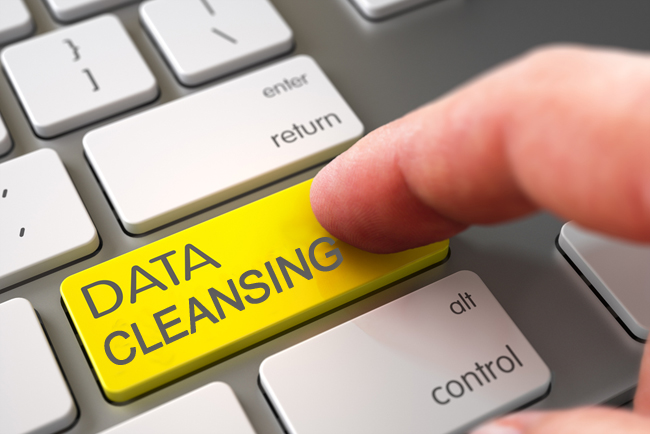Cleansing of data to ensure that the data getting on to the enterprise databases is correct, usable, and consistent. No matter what business you run and what type of enterprise database you are building, it is important to ensure data quality.
Data cleaning must be included in the routine of effective enterprise database management. In this article, we are discussing data cleansing and why it is important.
What is data cleansing?
Data cleansing or data cleaning is crucial in ensuring the quality of data to make it usable and consistent for database operations. To clean the data, you must first identify the errors and inconsistencies in the database and further correct or delete them. Database cleaning needs to be done manually by finding out the errors and preventing any errors from entering the system.
Many aspects of data cleaning are related to using different software tools; however, some portion of it cannot be automated but needs to be done manually. Even though data cleaning can be an overwhelming task while done manually, it is important to do this if you want to benefit from your enterprise data.
Advantages of data cleaning
As discussed above, data cleaning will help you to make sure that the data entering into your corporate database management system are clean, consistent, and usable. There are many additional benefits too on having cleaner data as:
- It will remove any errors (minor or major) and inconsistencies that may be inevitable while you gather data from various parallel sources being pulled into one dataset.
- Usage of tools for cleaning data will help to make the process and team members more efficient. It increases productivity as the data made available quickly when you need them.
- Only fewer errors in data mean happier users and customers and only minimal negative repercussions.
- Data cleansing will allow you to map various data functions and understand the intention of your data better. It will also help you to learn where data is coming from and how it is being processed.
When it comes to setting up a database and deciding the data points, it is so common that business decision-makers face many confusions. You may try to get an expert DBA service provider’s assistance to get assistive consultation in this regard. Remote database administration experts like RemoteDBA.com can be of help in such scenarios.
Steps involved in data cleaning
Data cleaning is primarily done in different steps. The primary step is done before the actual cleaning process itself in the big picture. You need to identify the goals and expectations of your data cleaning project. To achieve the set goals, at this phase, you need to have a clear data cleanup strategy. You have to ask some key questions yourself and focus on the top metrics to consider. Some of these questions include:
- What is the highest metric you are trying to achieve?
- What is your company’s overall goal, and what you want each member of the team to achieve for this?
An ideal way to start is to do brainstorming with the stakeholders and get their views to compile. Further, we will discuss some of the best practices to follow while devising a process for data cleaning.
-
Monitor for errors
Keep a record of the trends from where most of the errors are coming in. Identifying this will make it easier to spot and fix the scope of corrupt data. If you are trying to integrate other solutions with your software, then you may make sure that your errors do not clog up at work.
-
Standardize the procedures
When it comes to data cleaning, you need to first standardize the data points of entry to ensure that only cleansed data is getting into the system, and it will also help avoid any duplication.
-
Validate accuracy
Once you clean the database, next try to validate the data accuracy. For this, you need to thoroughly investigate and research with the use of tools that will let you clean the data in real-time. Some of the tools may even use artificial intelligence and machine learning capabilities to test for data accuracy.
-
Identify duplicate
Identifying and eradicating data duplication will help you save a lot of time while setting up and analyzing data. Data repetition can be avoided by doing a thorough investigation and research. Investigate further various data cleansing tools to analyze the raw data in bulk and automate the analysis process for you.
-
Analyze data
After data standardization, scrubbing for duplication, and data validation, you may use some third-party sources to append. Many reliable third-party sources can capture the data directly from the first-party sites and compile and clean the data further to offer complete information for BI and analytics.
-
Enlighten the team
Once you set standards and procedures for data cleaning, then you should communicate with your team to adopt the new protocol and stick to it. Once you scrub down your data, it is important to ensure that you keep it clean on the go. Thus, it is essential to keep the team in the loop to strengthen the customer segmentation to further targeted info to the prospects.
Along with these six steps, which will ensure cleansed, consistent, and usable data, you also need to monitor and review data consistency to identify any deviations in the processor to further fine-tune it as the data environment expands.
If you are dealing with data management, then you should not overlook the need for data cleaning. Always keeping up with accurate and consistent data input is essential in everyday business operations if you want to succeed. These six steps outlined above will surely help you to create a procedure and stick to it. Once you are done with the data cleansing process, you may further move on confidently using data for analytics and getting more operational insights for business decision-making.


